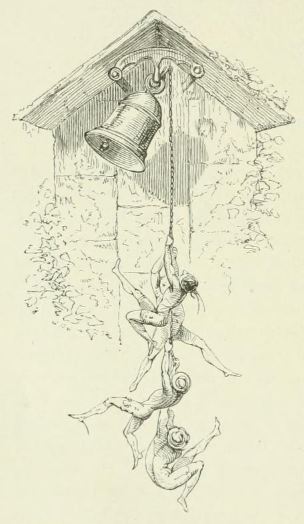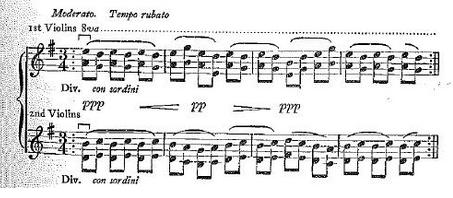The Music of Fairy Recorded

Recently I was asked to record some “fairy music” from transcriptions of short musical passages believed by their hearers to have been made by fairies or banshees. This music was recorded on a 1990s-era Allen electronic organ in a church in Dayton, Ohio. Many thanks to Dr Simon Young, editor of Seeing Fairies, by Marjorie T. Johnson for suggesting and encouraging that I record these excerpts. See The Fairyist website, home of the new Fairy Investigation Society, for fairy music and infinitely much more, including a new fairy census.
The first file is a piece transcribed by musician and composer, Dr. Thomas Wood. He was on holiday with a group of friends on Dartmoor in 1922. He writes:
And then I heard the last thing I expected to hear…music in the air! It was overhead, faint as a breath. It died away, came back louder, over me, swaying like a censer that dips. It lasted 20 minutes. Portable wireless sets were unknown in 1922. My field glasses assured me no picnickers were in sight. It was not a gramophone nor was it an illusory noise in my ears. This music was essentially harmonic, not a melody nor an air. It sounded like the weaving together of tenuous fairy sounds. I listened with every faculty drawn out to an intensity…I am prepared to say on oath that what I wrote down is so close to the original that the authors themselves would not know the different…The music drifted into silence. No more came, then or since. I was reasonably certain that I had been deliberately encouraged to listen to the supernatural.
Dr Wood transcribed the music for two violins. As a keyboard person, I found it very difficult to play the transcription at the speed indicated (108-120 beats). The hand position on a keyboard may not be able to encompass writing for strings and my small hands were not up to the task. This short excerpt gives an indication of the actual speed of the piece.
Here is the score of the Wood music.

This next item is described as the cry of the banshee. Below the description is the call as given by Yeats. Here is what Yeats writes about it:
Some say wrongly that [the banshee] never goes beyond the seas, but dwells always in her own country. Upon the other hand, a distinguished writer on anthropology assures me that he has heard her on 1st December 1867, in Pital, near Libertad, Central America, as he rode through a deep forest. She was dressed in pale yellow, and raised a cry like a cry of a bat. [I would suggest that the call might actually have come from a Southern Yellow Bat.] She came to announce the death of his father. This is her cry, written down by him with the help of a Frenchman and a violin.
Irish Fairy Tales [London, 1892] p. 232

The banshee call is recorded with two different sets of organ registration. 1) vox humana, oboe, nazard, tierce and 2) holz gedackt, quint, III, full open.
This is a piece which probably came originally from an informant of Thomas Crofton Croker’s. It is also mentioned by Wirt Sikes.
And the musical score:

Here are two “banshee calls” found in an appendix of Patricia Lysaght’s book The Banshee. Information on where exactly and under what circumstances these were transcribed is not known.
Here is what Lysaght writes about this “wail of the banshee.”
“Mr. and Mrs. S.C. Hall appear to provide the earliest example in volume III of Ireland: its Scenery, Character &c., London, 1843, p. 106. The Halls describe the quality of the cry and then purport to give “a correct notation of the wail of the Banshee” which they declare is ‘the archetype of the Keen.’
“This warning is given by a peculiarly mournful wail at night–a sound that resembles the melancholy sough of the wind, but having the tone of a human voice, and distinctly audible to a great distance. The following is a correct notation of the wail of the Banshee–the archtype of the Keen, as we have already had occasion to observe.
“The Halls give no details of the source or provenance of their notation of the cry.”
The piece above, which also appears in Lysaght’s appendix, is labled “Song of the Banshee.” Lysaght writes: “in 1888 also, D.R. McAnally in Irish Wonders, London, P. 110, includes a musical notation which he says is the ‘Song of the Banshee by a Kerry Pishogue.'”
See also Fortean Times 321, December 2014 for my article on the music of fairyland, plus other articles on the Fairy Investigation Society and the fairy census.
